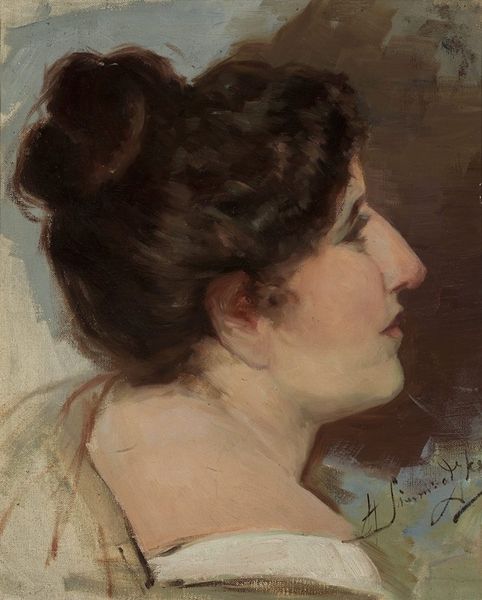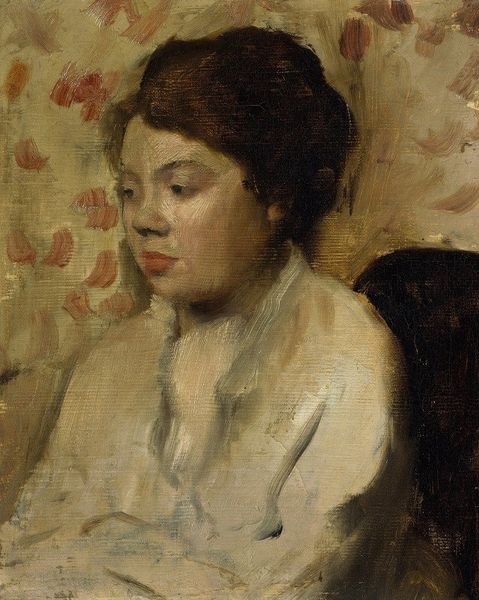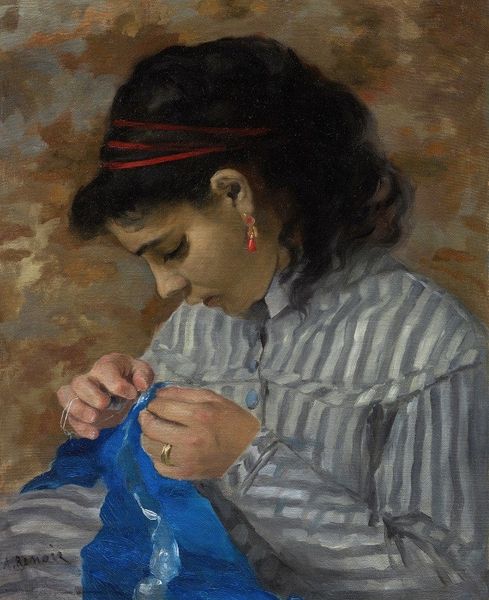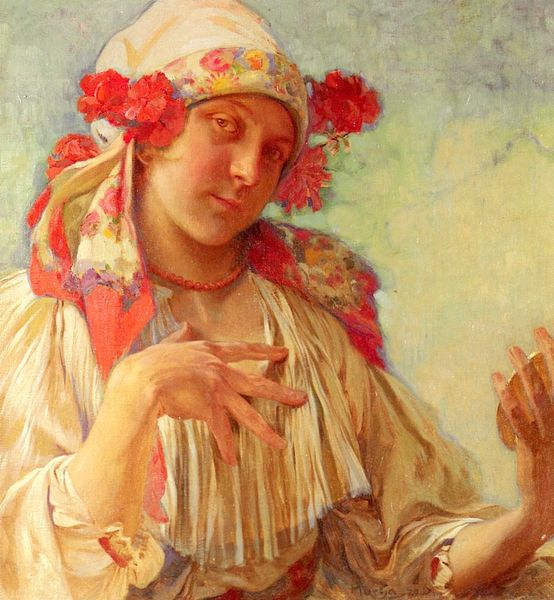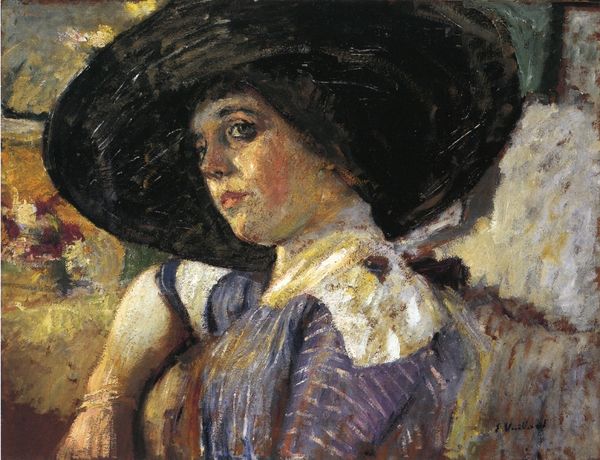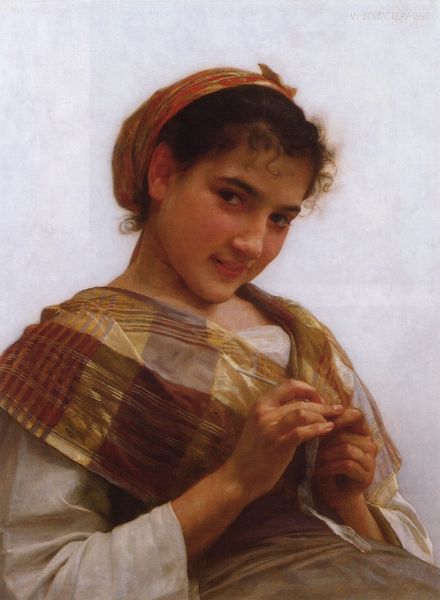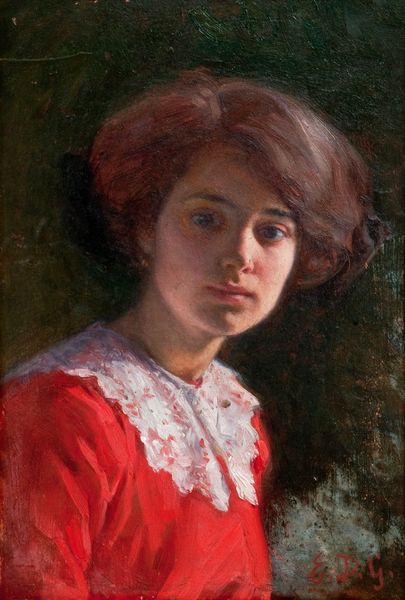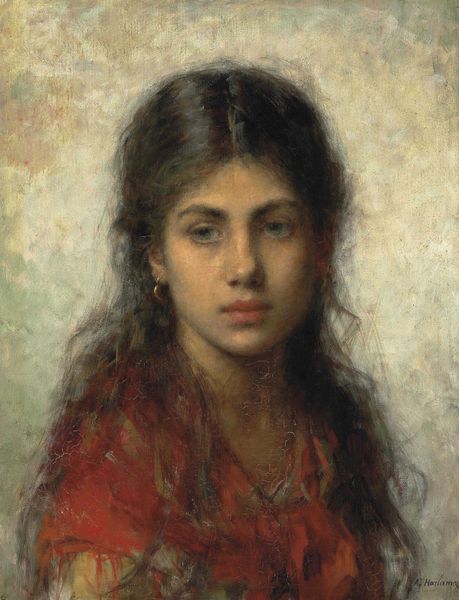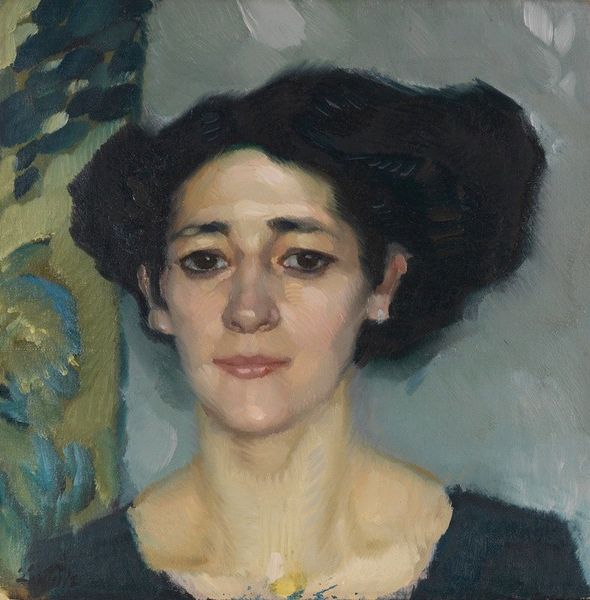
oil-paint
#
portrait
#
figurative
#
oil-paint
#
oil painting
#
romanticism
#
genre-painting
#
realism
Copyright: Public Domain: Artvee
Curator: Ah, this piece always catches my eye. We are looking at "Italienisches Mädchen mit Kopftuch und Tamburin"—Italian Girl with Headscarf and Tambourine—painted by Anton Romako. There isn't a precise date attributed to this work, unfortunately. Editor: My first impression is of restrained energy. She is so still, but I can almost hear the faint jingle of the tambourine as she holds it poised to play. There’s a captivating ambiguity in her expression. Curator: Absolutely. Romako masterfully captures that poised moment, that feeling of potential energy held within the symbol of the tambourine itself. Think of the tambourine as representing a folk tradition; her holding it links her to it, embodying centuries of cultural practices. It reflects the spirit and traditions inherent to Italian folk music and festivities. Editor: That's a good point about the visual representation of women and folk culture; this seems to be portraying a romantic vision of marginalized communities and a complicated dance of exoticism with potential social criticism. I wonder if it touches on stereotypes? Or perhaps an attempt to dignify those traditions. Curator: Stereotypes, and the line between respectful documentation and exploitation, were indeed a complex part of this era's genre painting. The tambourine might act as a symbol here beyond Italian culture in particular: music and rhythm representing freedom, expression, and community identity, particularly significant within the framework of Romanticism which favored emotion and intuition over reason. Editor: Indeed. The fact that Romako chooses to present her in this state of contemplation rather than performing is fascinating. It encourages a connection, as opposed to a depiction. Perhaps Romako aims to present her as a custodian of that vibrant, free-spirited cultural expression you’re pointing to. What materials does Romako employ to create such nuances? Curator: Predominantly, it's oil on canvas. Romako has created an atmosphere by using softer brushwork; observe the detail he gives the texture of the headscarf, contrasted with more hazy execution of the backdrop, focusing our attention squarely on the individual and her cultural symbol. Editor: Thank you for pointing that out! Thinking about our audiences encountering this painting and hopefully gaining a new perspective. Curator: My pleasure. Perhaps appreciating how even one symbol may embody far more depth when one chooses to listen.
Comments
No comments
Be the first to comment and join the conversation on the ultimate creative platform.

